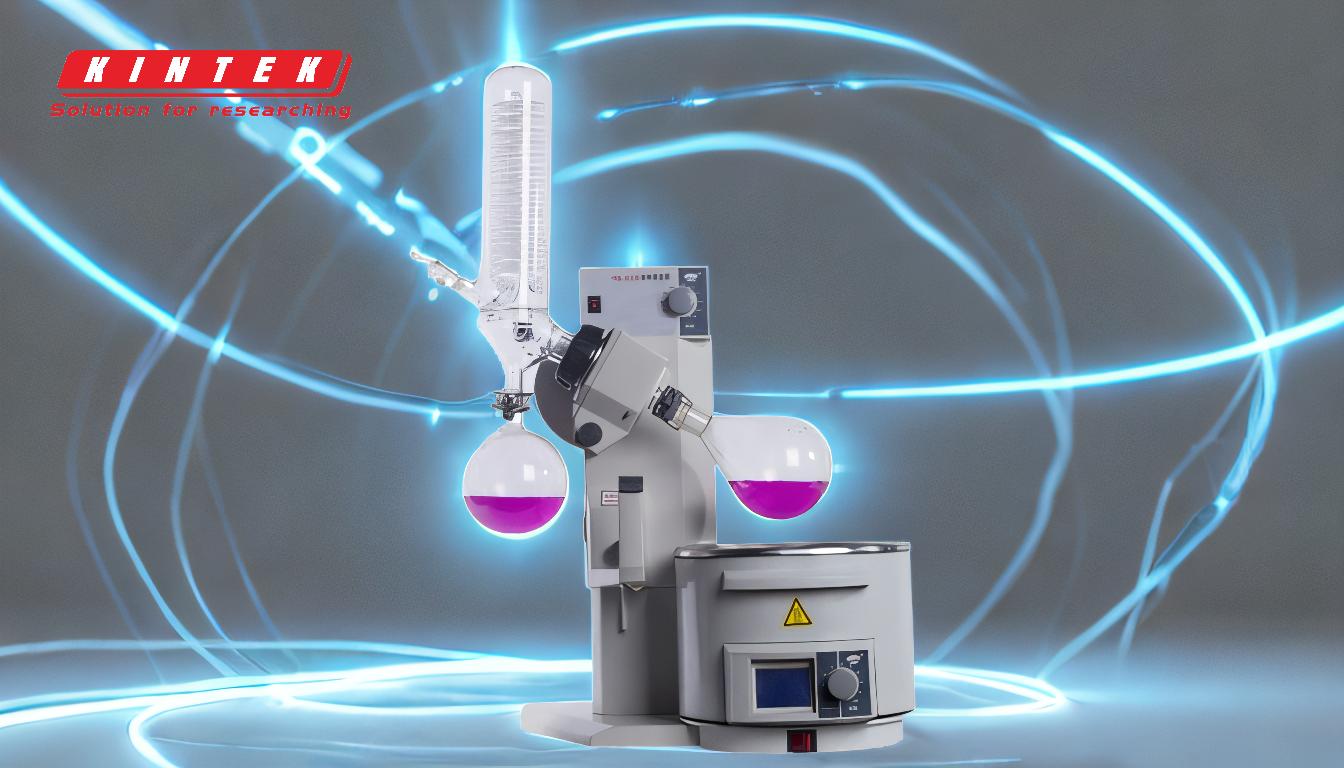The time required for a rotary evaporator (rotovap) to complete evaporation depends on several factors, including the solvent type, bath temperature, vacuum level, rotation speed, condenser efficiency, and sample volume. While there is no fixed duration, optimizing these variables can significantly influence the process. For instance, higher bath temperatures, stronger vacuum levels, and faster rotation speeds generally reduce evaporation time. However, balancing these factors is crucial to avoid damaging heat-sensitive samples or compromising equipment integrity. A typical evaporation process can range from a few minutes to several hours, depending on the complexity of the setup and the properties of the solvent being evaporated.
Key Points Explained:

-
Factors Influencing Evaporation Time:
- Solvent Type: Different solvents have varying boiling points and evaporation rates. For example, ethanol evaporates faster than water due to its lower boiling point.
- Bath Temperature: Higher temperatures increase the evaporation rate but must be carefully controlled to avoid degrading heat-sensitive samples.
- Vacuum Level: A stronger vacuum lowers the boiling point of the solvent, speeding up evaporation. However, the vacuum degree must balance equipment pressure resistance and distillation efficiency.
- Rotation Speed: Faster rotation increases the surface area of the solvent, enhancing evaporation. However, excessive speed can cause mechanical damage to the equipment or reduce efficiency.
- Condenser Efficiency: Efficient condensers ensure rapid cooling of vapor, preventing re-evaporation and improving overall evaporation speed.
- Sample Volume: Larger volumes require more time to evaporate, as the process depends on the surface area exposed to heat and vacuum.
-
Optimizing Evaporation Time:
- Adjusting Bath Temperature: Start with a moderate temperature and gradually increase it to avoid overheating sensitive samples.
- Balancing Vacuum and Rotation Speed: Use a vacuum level and rotation speed that maximize evaporation without compromising equipment or sample integrity.
- Selecting the Right Condenser: Choose condensers with high cooling efficiency to minimize re-evaporation and improve recovery rates.
- Monitoring the Process: Regularly check the evaporation progress to ensure optimal conditions and prevent over-evaporation or sample degradation.
-
Equipment Considerations:
- Vacuum Pump and System Tightness: A powerful vacuum pump and a tightly sealed system are essential for maintaining a strong vacuum, which directly impacts evaporation speed.
- Material Quality: Components like sealing rings and vacuum tubes made from durable materials (e.g., PTFE) ensure long-term performance and resistance to wear and corrosion.
- Rotovap Model and Vessel Size: The size of the evaporation flask must match the rotovap model to ensure efficient operation. Larger vessels may require more time for complete evaporation.
-
Practical Tips for Users:
- Start with Lower Settings: Begin with lower bath temperatures, moderate vacuum levels, and slower rotation speeds, then adjust as needed.
- Avoid Overloading the Flask: Ensure the flask is not overfilled, as this can reduce the surface area available for evaporation and prolong the process.
- Use Precise Controls: Modern rotovaps often come with digital controls for temperature, vacuum, and rotation speed, allowing for precise adjustments to optimize evaporation time.
- Consider Solvent Properties: Research the boiling points and evaporation rates of the solvents being used to set appropriate parameters.
By understanding and controlling these factors, users can significantly reduce the time required for evaporation while maintaining sample integrity and equipment longevity.
Summary Table:
| Factor | Impact on Evaporation Time |
|---|---|
| Solvent Type | Lower boiling points (e.g., ethanol) evaporate faster than higher boiling points (e.g., water). |
| Bath Temperature | Higher temperatures speed up evaporation but risk damaging heat-sensitive samples. |
| Vacuum Level | Stronger vacuums reduce boiling points, speeding up evaporation. |
| Rotation Speed | Faster rotation increases surface area, enhancing evaporation. |
| Condenser Efficiency | Efficient condensers prevent re-evaporation, improving speed. |
| Sample Volume | Larger volumes require more time due to limited surface area exposure. |
Need help optimizing your rotary evaporator process? Contact our experts today for tailored advice!















